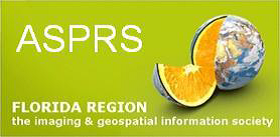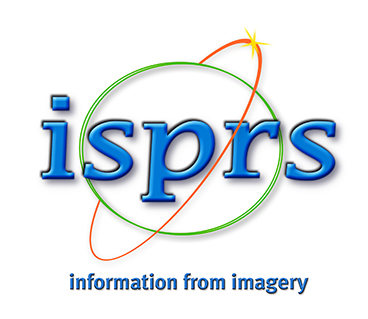A year ago, I was writing about the high quality of online material, both remote events and commercial webinars, enabling us to remain up to date professionally while we waited for the pandemic to abate. Who would have thought that a year later I would be writing much the same? Scientists have amazed us by developing vaccines quicker than ever thought possible and in many countries governments at all levels have taken on the immense logistical challenge of injecting them into arms. Sadly, the picture is now being complicated by the arrival of variants and the danger of spread in areas where levels of vaccination are, for whatever reason, lower than needed. We hope there is land just over the horizon…

While we are waiting, there are still multiple opportunities for update. On 17 June 2021, the University of Florida and the ASPRS Florida Region ran their 10th Joint Lidar Workshop. The format followed that of the previous iteration, which provided the bulk of the content of the Spring 2021 issue of LIDAR Magazine – updates from the local, state and national entities capturing lidar data for Florida; a keynote from Dr. Warren Day of USGS; two presentations by academics; and a dozen by the gold and silver sponsors whose support is critical to this meeting. Once again, it’s my pleasure to be working with Dr. Al Karlin of Dewberry to publish some of these presentations in the magazine. Tragically, Florida is in the news these days and the building collapse has brought rising sea levels and high water tables into the public eye. It’s all the more important that the geospatial community continues to use its skills and tools to monitor what’s going on in the Sunshine State.

Meanwhile, on an international scale, 5 July 2021 was the opening day of the XXIV ISPRS Congress 2021 Digital Edition. The strong team of conference organizers, led by Congress Director Dr. Nicolas Paparoditis (France) have ably managed the havoc that covid wreaked upon their plans, causing the postponement of not only the face-to-face Congress in Nice, France in 2020, but also the replacements event in Nice in 2021. There was a Digital Edition last year, reported in LIDAR Magazine, and the physical event has been rescheduled a second time and will now take place in Nice on 6-11 June 2022. The brilliant blue Mediterranean has never been more eagerly sought!
The 2021 Digital Edition – a bargain at €100 – is provided on a powerful, easy-to-use platform. There are two rooms for live events and a third for interactive poster sessions. There is a digital exhibition, in which links are provided to spaces specially developed by the 23 exhibitors to showcase their wares. Some of the exhibitors also present live. The event is run during the working day in Central European Time, so the opening ceremony was at 3 am in California, not long after the Independence Day celebrations and fireworks, but logging in was worthwhile as it included presentation of the F.J. Doyle Award to Professor Konrad Schindler of ETH Zürich. The presentation was made by Christian Heipke (ISPRS president, Germany) and Konrad’s predecessor, the famous photogrammetrist Armin Grün. Christian made the excellent point that Konrad is a recognized name in both photogrammetry and computer vision – not many scientists deserve this accolade. Konrad gave a short, elegant acceptance speech. His work spanning photogrammetry and CV has been especially important as the latter provides the foundations of the theory behind structure-from-motion, which is almost universally used to compute results from UAV flight missions. This was followed by a fine presentation by Emmanuel Flory of Airbus about the Pléiades Neo constellation, which will consist of four satellites: the first, Pléiades 3, was launched on 29 April 2021; Pléiades is due for launch on 10 August 2021; and Pléiades 5 and 6 will be launched simultaneously in mid-2022. The imagery will offer resolution as high as 30 cm, will be capable of covering two million km2 per day, and will have not only the four expected bands – R, G, B, NIR – but also deep blue and red edge. This Airbus project is purely commercial and does not rely on government funding. There’s plenty of detail here. I noticed that the number of participants logged into the Digital Edition 2021 was in the 230-250 range.
While a week of nightshifts is not possible for your reporter, it is a pleasant, though daunting task so go through the list of hundreds of videos of the presentations and posters and choose a few to view. I’ll try to interest some of the authors in pubishing non-peer-reviewed versions in LIDAR Magazine if their presentations are mainstream for our readership. But I want to listen to some sessions live. The awards ceremonies and keynotes are important. And I confess I missed a poster, “55 Years in ISPRS – The ambassador of our profession” by Larry Fritz, a big name in US photogrammetry who was active in ISPRS for decades and was one of the founders of The ISPRS Foundation (TIF), which is ISPRS’s philanthropic arm, responsible since 2006 for awarding travel grants to hundreds of young scientists, mainly from developing countries, to attend ISPRS events and present their work. I have the honor to chair the board of trustees of TIF, trying to push Larry’s agenda forward and grow the activity. What a shame there is no video of this poster.
On Friday there are four sessions that comprise “ISPRS Geospatial Lecture Day 2021”, consisting of overview lectures by leading experts. These are worth staying awake for! I can’t wait for “State and trends in airborne lidar” by Stuttgart guru Gottfried Mandlburger; “Deep learning for 3D point cloud analysis” by Loic Landrieu; and “High-precision mapping with UAVs” by four French and Swiss speakers.
If you’re as keen as I am to hear about the latest research in photogrammetry, lidar and remote sensing, there’s still time to register. The XXIV ISPRS Congress Digital Edition 2021 deserves a visit.